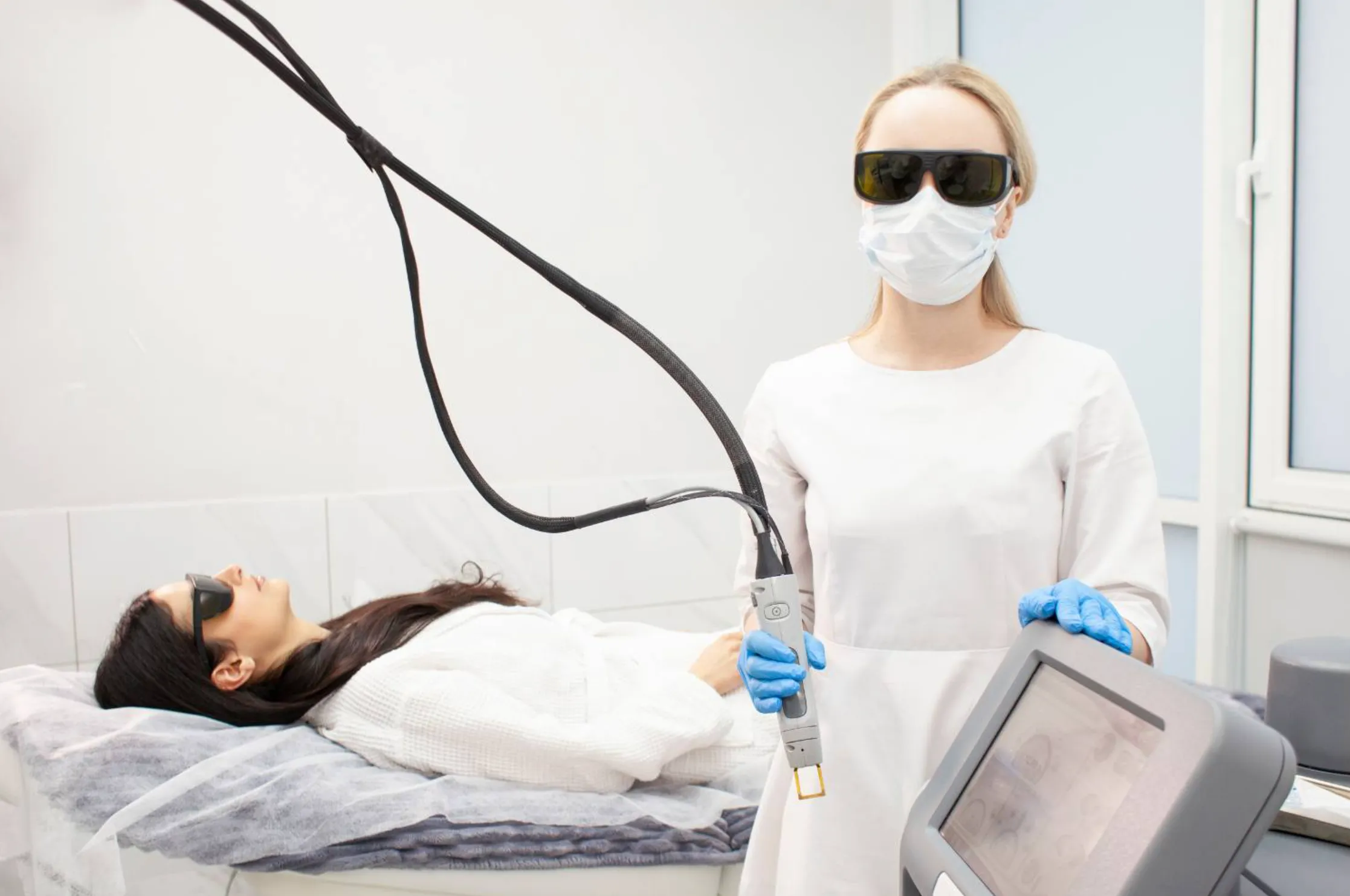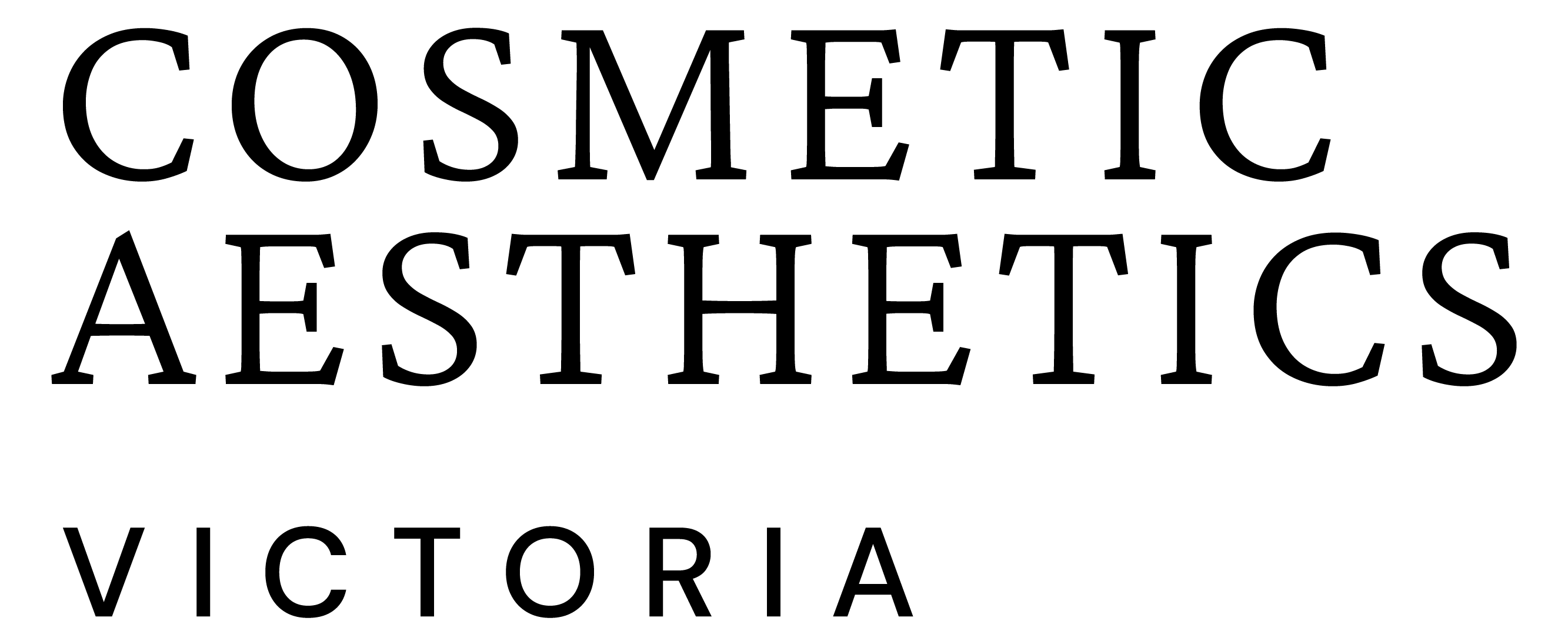
Laser Hair Removal: Is It A Permanent Solution For Lasting Results?
If you’ve ever battled with the constant cycle of shaving, waxing, or tweezing, you’ve probably wondered if there’s a more permanent solution for smooth, hair-free skin. Laser hair removal promises lasting results, but how permanent are they really? In this blog, we’ll dive into the effectiveness of laser hair removal, exploring how it works, what to expect, and whether it’s the right option for you. Get ready to uncover the truth behind laser hair removal and its potential for permanent hair reduction.
The Science Behind Laser Hair Removal
Laser hair removal (LHR) is one of those treatments that seems almost too good to be true. You’ve likely heard a few people in your life talk about it with glowing reviews, boasting about how smooth their skin is after just a few sessions. But is it really the miracle solution for permanent hair removal? Well, before I answer that, let’s first break down what’s actually happening during the treatment.
When I first tried laser hair removal, I was a little sceptical, much like many people considering it. The process uses highly concentrated beams of light that target the melanin in your hair. Now, here’s where it gets interesting: Melanin, the pigment in your hair, absorbs the laser’s light, which converts into heat. That heat then travels down into the hair follicle, ultimately damaging it to the point where it can no longer produce hair effectively.
It sounds simple, right? But there’s more to it. The laser doesn’t work on every single hair at once. It operates in sync with your hair growth cycle, and it’s most effective during the Anagen phase—the active growth phase. This means that not all hair will be targeted in a single session because not all of it is actively growing at the same time. So, don’t be surprised if it takes a few sessions to really start seeing those lasting results.
What Areas Can Be Treated With Laser Hair Removal?
I remember feeling a little nervous about having the procedure done on my face, but laser hair removal can be used safely on nearly every part of the body. Whether it’s the underarms, bikini line, or even the back and chest, the treatment is versatile.
I opted for a few treatments on my legs, and it didn’t take long before I noticed fewer and finer hairs growing back. But what truly sold me was when I treated my bikini line. As someone who had spent years waxing (and let’s be honest, dreading it), the idea of no longer having to deal with regular appointments was bliss. And it worked. After a series of sessions, my bikini line stayed smooth for months!

Is Laser Hair Removal Permanent? What You Need To Know
Permanent Hair Reduction Vs. Permanent Hair Removal
When it comes to laser hair removal, it’s essential to be clear about the terminology. You’ll often hear people refer to it as “permanent hair removal,” but this isn’t entirely accurate. The FDA, in fact, classifies it as permanent hair reduction. Now, you might be wondering—what’s the difference?
Here’s the thing: While laser hair removal can significantly reduce hair growth, it doesn’t guarantee complete, lifelong removal. Over time, some hair follicles may regain their ability to produce hair, albeit thinner, lighter, and less noticeable. In my own experience, after my first few treatments, I saw a dramatic reduction in hair growth. However, a few fine hairs began to sprout back after some months, but nothing compared to the thick growth I used to deal with. It’s more of a reduction, rather than a full “goodbye forever” scenario.
So, while laser hair removal offers long-lasting results, it’s important to manage your expectations and be prepared for occasional maintenance. The term “permanent” can be a little misleading here, as the results depend on factors like the area treated, skin and hair types, and individual growth cycles.
The Impact Of Laser Hair Removal On Hair Regrowth
After completing a treatment series, many people wonder if they’ll ever see regrowth. The truth is, hair regrowth is unlikely to be as dense or thick as it was before, but it’s not impossible. In fact, in some cases, the treated hair may become finer and softer, making regrowth less noticeable.
Take my underarms, for instance—before laser, I had coarse, dark hair that needed frequent shaving. Now, I only shave once every few weeks, and the hair that does grow back is finer and lighter in colour. It’s hardly noticeable and, to be honest, I don’t mind it much. For some areas, like the face or bikini line, results may be more permanent, but for others—like the back or lower legs—more frequent touch-ups may be needed.
How Long Do Laser Hair Removal Results Last?
Factors Influencing The Longevity Of Results
In my first few sessions, I was curious about how long the effects would last. I’ve heard many people claim to have gone years without seeing regrowth, and while that’s possible, there are a few things to keep in mind. The longevity of your results will depend on factors such as:
- Hair and Skin Color: The treatment is most effective on light skin with dark hair, as the contrast makes it easier for the laser to target the pigment in the hair follicle. As someone with pale skin and dark hair, I was a perfect candidate. However, advancements in technology, such as the Nd:YAG laser, have made it more accessible for people with darker skin tones as well.
- Hormonal Changes: For many women, hormonal fluctuations can impact hair growth. This includes conditions like PCOS, pregnancy, or menopause. I’ve personally noticed that during periods of hormonal imbalance, my regrowth has been a little more noticeable than during more stable times. If you’re experiencing such changes, be prepared to touch up treatments more often.
- Area of the Body: Some areas, like the upper lip or chin, may see quicker regrowth compared to larger body areas like legs or back. Hormonal influences make these areas more prone to hair regrowth, which I found to be true when treating my chin and upper lip. Even though the hair growth was thinner, it would still regrow more often than on my legs.
Why Multiple Sessions Are Necessary For Lasting Results?
Laser hair removal is effective, but it isn’t a one-and-done solution. I learned this the hard way during my first session when I expected everything to be smooth after a single treatment. Unfortunately, hair grows in cycles, and not all hairs are in the same phase during any given session. To get the best possible results, multiple sessions are needed to target hairs during their Anagen phase, which is when they’re actively growing and most susceptible to the laser.
Most experts recommend 6 to 8 sessions for optimal results, spaced out over several weeks. This allows you to target hairs as they enter the Anagen phase, ensuring that as many hair follicles as possible are treated. Trust me, the results are worth it—after completing the sessions, the hair that grew back was minimal, fine, and sparse.
Laser Hair Removal Maintenance: Touch-Ups And Longevity
Even after completing the initial treatment course, I’ve found that maintenance sessions are sometimes necessary. Some individuals, like myself, may require a touch-up once or twice a year to address any stray hairs that may have been missed. These occasional sessions ensure that the treated area remains smooth, especially for areas prone to hormonal hair growth.
The frequency of these maintenance sessions varies from person to person. For me, I only need a touch-up on my bikini line every 6 to 12 months, while my legs stay hair-free for a much longer period. I recommend sticking to your practitioner’s advice on this—keeping up with occasional sessions will ensure that the results last as long as possible.
Laser Hair Removal Vs. Traditional Hair Removal Methods
For years, I was stuck in the same old cycle of shaving and waxing. While these methods were convenient, they were far from perfect. Shaving led to daily maintenance, and waxing—while effective—was painful and required me to plan ahead. When I tried laser hair removal, I was amazed at the difference in convenience and results. Here’s how the two stack up:
- Shaving: Quick, affordable, but only a temporary solution. I would shave every few days, and while it was fast, I always had to deal with stubble or the occasional nick. Over time, the razor burn and bumps started getting annoying.
- Waxing: Waxing lasted longer than shaving, but it was still a short-term fix in comparison to laser. Plus, the pain was always a factor for me. I could never quite get used to the discomfort of the bikini wax, no matter how often I went.
- Epilating: While epilators do remove hair from the root, they’re not nearly as effective or long-lasting as laser treatments. The pain for me was on par with waxing, and the regrowth was slower than shaving but still required frequent maintenance.
In contrast, laser hair removal offered a game-changing difference. After a few sessions, I noticed that I was only shaving my legs about once every two weeks. The hair that did grow back was finer, lighter, and much less noticeable. What was particularly exciting for me was that I no longer had to deal with stubble after a few sessions.
Cost And Convenience: Which Method Is Best For You?
I won’t lie—the upfront cost of laser hair removal can be intimidating, especially when compared to shaving or waxing. But when you weigh it against the ongoing costs and effort of traditional methods, it’s easy to see why many opt for laser.
Here’s the breakdown based on my personal experience:
- Shaving: Cheap and accessible, but the cost adds up over time with razors, shaving cream, and aftershave. Plus, I was spending 10-15 minutes every couple of days, which adds up to a lot of time over the course of a year.
- Waxing: While the price per session might seem affordable, the cost quickly adds up if you’re going every few weeks. Plus, let’s not forget the inconvenience of booking appointments and the pain factor.
- Laser Hair Removal: The upfront cost is higher, but after completing the treatment series (around 6-8 sessions), the overall cost per treatment becomes far more economical in the long run. No more razors, no more booking appointments every month, and the results last much longer. Plus, I found that the convenience of fewer hair regrowths made it more than worth it.

Is Laser Hair Removal Effective For All Hair Types?
Why Laser Hair Removal Works Best On Dark Hair
During my treatment, the laser technician mentioned that dark, coarse hair is more responsive to laser hair removal because it contains more melanin, which absorbs the light more efficiently. As someone with dark hair and fair skin, I was a prime candidate for laser hair removal. The light from the laser beams hits the melanin, which absorbs the light and converts it to heat, damaging the hair follicle.
But what happens if you have light or grey hair? Well, here’s where it gets tricky: Laser hair removal works by targeting pigment, and without enough pigment (as in the case of blonde, grey, or white hair), the laser may not be as effective. I had a few friends with blonde hair who tried it, and they didn’t see the same success rate I did. They had to resort to other options, like electrolysis, for more permanent results.
Can Laser Hair Removal Be Used On All Skin Types?
Another factor to consider is skin type. I have fair skin, so I didn’t have to worry about this issue, but it’s a concern for many with darker skin tones. For a long time, individuals with darker skin were told laser hair removal wasn’t an option for them, but advancements in technology have changed this.
The introduction of longer wavelength lasers, like the Nd:YAG laser, has made laser hair removal safer and more effective for darker skin tones. These lasers are able to penetrate deeper into the skin, targeting hair follicles while minimising the risk of damaging the surrounding skin. This was great news for me, as I’ve worked with clients who have darker skin, and they’ve had fantastic results as well.
Hormonal Hair Growth: Special Considerations
For those of us who’ve experienced hormonal changes—whether due to pregnancy, menopause, or conditions like PCOS—laser hair removal can be a bit of a wild card. I noticed that after pregnancy, I had some increased hair growth in areas I hadn’t seen before. And this is something that many people dealing with hormonal shifts may experience.
Hormones can stimulate hair growth even after you’ve had a series of laser treatments. That’s why touch-up sessions are often needed to manage regrowth in hormonally active areas, such as the upper lip, chin, and jawline.
What To Expect After Laser Hair Removal Treatments?
After completing my final session, I was eager to see the results. In the first few days post-treatment, I noticed some mild redness and swelling in the treated area, which is completely normal and something my technician had warned me about. I followed all the aftercare instructions to a T, such as avoiding sun exposure and using gentle moisturisers.
As the weeks went by, I noticed my hair shedding—yes, shedding! The treated follicles gradually stopped growing hair, and within a few weeks, the regrowth slowed down considerably. While there were still a few stray hairs in some areas, they were much finer and lighter, as expected. In fact, I was so pleased with the results that I didn’t even think about scheduling a touch-up session until almost a year later.
Potential Side Effects Of Laser Hair Removal
| Category | Side Effect | Description | Duration / Notes |
| Common (Usually Temporary) | Redness & Swelling | Mild redness resembling a sunburn; common after treatment. | Fades within a few hours. |
| Skin Irritation | Temporary rash-like irritation; skin may feel itchy or bumpy. | Usually subsides within a day or two; soothing lotion helps. | |
| Sensitivity | Treated area may feel tender or more reactive than usual. | Avoid heat/sun exposure for 1–2 days to ease recovery. | |
| Rare (More Serious) | Burns | Occurs if incorrect settings are used or device is mishandled. | Can result in blistering or long-term damage; requires medical care. |
| Scarring | Improper technique or poor aftercare may lead to scarring. | Rare when performed by experienced professionals. | |
| Skin Discolouration | Hypo- or hyperpigmentation in treated areas. | More common in darker skin tones if settings are incorrect. |
How Many Sessions Are Needed For Permanent Results?
When I first began my laser hair removal treatments, I was eager to see immediate results. Like many, I was hoping for that magical “one-and-done” treatment. But, as I quickly learned, patience is key. Laser hair removal isn’t a one-session wonder—it requires a series of treatments to be truly effective.
The general recommendation is 6 to 8 sessions spread over several weeks. I remember being a little discouraged after the first session because there wasn’t much visible change. But my practitioner assured me that this was normal. The reason for the multiple sessions is that hair grows in cycles, and not all hair is in the same phase during one treatment. Laser hair removal is most effective during the Anagen phase (the active growth phase), so it takes a few sessions to target as many hair follicles as possible during this phase.
For my legs, I started noticing significant results around the third or fourth session. After completing all 8 sessions, the hair growth on my legs was reduced by about 90%. The remaining fine hairs were sparse and much lighter than before. It was a game-changer for me, and I could finally wear shorts without worrying about stubble or waxing appointments.
Can You Achieve Long-Lasting Results In Just One Session?
Now, I know it’s tempting to think that one session will do the trick. However, long-lasting results in just one session are unlikely—even though you may notice some immediate reduction in hair growth after the first treatment. It’s important to understand that multiple sessions are necessary to target hair at different growth stages.
In fact, the first session often focuses on addressing the most prominent hairs that are actively growing. As you progress through the treatments, you’ll notice that the hairs that were once thick and coarse become finer and less noticeable. But that process takes time, so consistency with your sessions is crucial for the most effective and lasting results.
Laser Hair Removal Aftercare: What To Expect And How To Maintain Smooth Skin?
Post-Treatment Care: Ensuring Long-Term Results
One of the key things I learned early on with laser hair removal is how crucial aftercare is for optimal results. After my sessions, my practitioner gave me a list of aftercare instructions, which I followed diligently. Here’s what I did to ensure that my results lasted:
- Avoid Sun Exposure: This was probably the hardest part for me, especially living in Australia where the sun can be relentless. After each session, I made sure to wear sunscreen on the treated areas or, if possible, kept them covered to avoid pigmentation changes or irritation.
- Don’t Scratch or Rub the Treated Area: After my first session, I noticed a slight redness and swelling. Instead of reaching for a cooling cream or rubbing the area, I was told to let it heal naturally. Patience was key here, and the irritation faded within a few hours.
- Stay Away from Hot Showers and Saunas: For the first 24-48 hours after treatment, I avoided anything that could irritate my skin, like hot showers or saunas. This gave my skin the time it needed to recover without additional stress.
What To Expect After Completing Laser Hair Removal Treatments
After completing my final session, I eagerly awaited the day when I could confidently say goodbye to shaving or waxing. And after about 6 months, I was amazed at the results. The treated areas remained smooth, and I no longer had to worry about stubble. However, a few fine hairs did start to regrow in some areas, but as expected, they were lighter and finer.
For many, including myself, the results are often gradual, so it’s normal to experience a slight delay in seeing full results. After my sessions, I was told that some hair might continue to shed for a few weeks, and that’s exactly what happened. The key takeaway for me was don’t expect immediate perfection—but with time, the results are well worth the wait.
What’s The Maintenance Like Post-Treatment?
I often get asked how much maintenance laser hair removal really requires, and in my experience, it’s not as much as you might think. After completing the initial series of treatments, most areas remained hair-free for a significant period of time. However, hormonal areas like the upper lip or chin may require some touch-up treatments every 6 to 12 months, depending on how the hair regrows.
Here’s a simple checklist of what to expect:
- Months 1-6: Complete your full series of treatments (6-8 sessions). This is the active period of your treatment plan.
- Months 6-12: Assess the results. Some people may need one or two touch-ups during this time, especially on hormonally sensitive areas.
- Beyond 12 months: Maintenance may be necessary for some individuals, but many people find that their results last for years with minimal maintenance.
To answer the burning question: Is laser hair removal permanent? The short answer is no, but it’s highly effective for long-term hair reduction. After a full treatment series, you’ll experience significant and lasting results, but occasional touch-ups may be necessary to maintain smooth, hair-free skin.
For me, laser hair removal has been a complete game-changer. The results have been nothing short of transformative, and I no longer worry about shaving or waxing every few days. If you’re considering laser hair removal, be sure to follow your treatment plan, and don’t forget about those occasional maintenance sessions.

